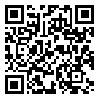Volume 12, Issue 2 (4-2022)
IJOCE 2022, 12(2): 171-184 |
Back to browse issues page
Download citation:
BibTeX | RIS | EndNote | Medlars | ProCite | Reference Manager | RefWorks
Send citation to:



BibTeX | RIS | EndNote | Medlars | ProCite | Reference Manager | RefWorks
Send citation to:
. Fadavi Amiri M, Rajabi E, Ghodrati Amiri G. APPLICATION OF NEURAL NETWORK IN EVALUATION OF SEISMIC CAPACITY FOR STEEL STRUCTURES UNDER CRITICAL SUCCESSIVE EARTHQUAKES. IJOCE 2022; 12 (2) :171-184
URL: http://ijoce.iust.ac.ir/article-1-514-en.html
URL: http://ijoce.iust.ac.ir/article-1-514-en.html
Abstract: (9944 Views)
Depending on the tectonic activities, most buildings subject to multiple earthquakes, while a single design earthquake is suggested in most seismic design codes. Perhaps, the lack of easy assessment to second shock information and sometimes use of inappropriate methods in estimating these features cause successive earthquakes mainly were ignored in the analysis procedure. In order to overcome to above deficiencies, the learning abilities of artificial neural networks (ANNs) are used in two steps to evaluate the seismic capacity of steel frames consisting moment-resisting frames, ordinary concentrically, and buckling restrained brace (BRB) under critical consecutive earthquakes. For this purpose, peak ground acceleration of second shock (PGAa) is estimated based on the first shock features in the first step. Next, second ANNs estimate the decreased capacity of the damaged structure for LS and CP performance level according to the proposed PGAa from the previous step and some seismic and structural features. The results indicate that ANNs are trained to generalize the unseen information very well and reflect good precision in predicting target results in both steps. Finally, the effect of different parameters and repeated shocks is investigated on the seismic performance of mentioned frames. The results show the proper performance of BRB frames in the case of real and repeated earthquakes.
Keywords: seismic sequence, artificial neural networks, buckling restrained brace, ordinary concentrically braced, incremental dynamic analysis, seismic capacity
Type of Study: Research |
Subject:
Applications
Received: 2022/04/4 | Accepted: 2022/04/12 | Published: 2022/04/12
Received: 2022/04/4 | Accepted: 2022/04/12 | Published: 2022/04/12
| Rights and permissions | |
 | This work is licensed under a Creative Commons Attribution-NonCommercial 4.0 International License. |





